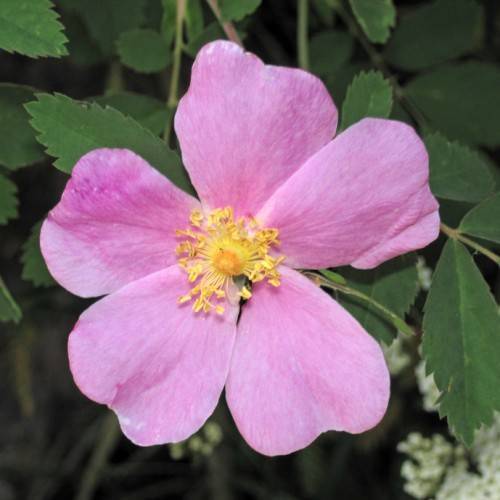
Common Wild Rose
Rosa Woodsii
Also Known As - Wood's roseCycle:
Perennial
Watering:
Frequent
Hardiness Zone:
4
Flowers:
Flowers In Spring
Sun:
Full sun, Part sun/part shade
Soil:
Sandy,Loamy,Clay
Fruits:
Fruits In Autumn Ready In Fall
Edible:
Yes
Leaf:
Yes
Growth Rate:
High
Drought Tolerant:
Yes
Thorny:
Yes
Invasive:
Yes
Care Level:
Medium
watering
Common Wild Rose (Rosa woodsii) enjoys regular but moderate watering. Depending on the climate and soil type, this plant should be watered about every week or 2, or when the top 2-3 inches of soil are dry. Water should be deep and thorough, allowing water to reach the roots. In hotter climates, watering about once a week or even more often may be necessary. It is important to watch for signs of stress such as wilting, drooping, or yellowing leaves. If the plant does become stressed, additional watering may be needed until the plant has recovered.
sunlight
The Common Wild Rose (Rosa Woodsii) is a hardy species that grows in many parts of North America. Generally, it prefers climates that are sunny and well-drained. The wild rose can tolerate a wide range of lighting conditions, from full sun to part shade. For optimal growth, Common Wild Rose should receive at least 6 hours of direct sunlight each day. Depending on the season and location, it may need more or less light. In the summer months, it may need 8 to 10 hours of direct sunlight, while in the winter, 6 hours or less may be sufficient. When grown indoors or in shade, the Common Wild Rose can make use of supplemented daylight. T5 and LED grow lights can be used to provide supplemental lighting. The best times to provide supplemental lighting is in the late winter and early spring, when natural sunlight levels may be limited.
pruning
Common Wild Rose (Rosa Woodsii) should be pruned in the spring a few weeks after blooming. Pruning should be moderate to light, removing dead and unhealthy deadwood, crossing branches, and encouraging the growth of lateral branches. Any major pruning should be kept to just a few canes as removal of too many canes can reduce flower production for the next year. Prune by cutting back the longest canes by 1 third and the shortest canes by 2 thirds.
